Brain-machine interfaces (BMIs) are devices that enable direct communication/translation between biological neuronal networks (e.g. a brain or a spine) and external machines. They are currently being used as a tool for fundamental neuroscience research and also for treating neurological disorders and for manipulating neuro-prosthetic devices. As remarkable as today’s BMIs are, however, the next generation BMIs will require new hardware and software with improved resolution and specificity in order to precisely monitor and control the activities of complex neuronal networks. In this talk, I will describe my group’s effort to develop new neuroelectronic devices enabled by silicon nanotechnology that can serve as high-precision, highly multiplexed interface to neuronal networks. I will then describe the promises, as well as potential pitfalls, of next generation BMIs. Hongkun Park is a Professor of Chemistry and Chemical Biology and a Professor of Physics at Harvard University. He is also an Institute Member of the Broad Institute of Harvard and MIT and a member of the Harvard Center for Brain Science and Harvard Quantum Optics Center. He serves as an associate editor of Nano Letters. His research interests lie in exploring solid-state photonic, optoelectronic, and plasmonic devices for quantum information processing as well as developing new nano-and microelectronic interfaces for living cells, cell networks, and organisms. Awards and honors that he received include the Ho-Am Foundation Prize in Science, NIH Director’s Pioneer Award, and the US Vannevar Bush Faculty Fellowship, the David and Lucile Packard Foundation Fellowship for Science and Engineering, the Alfred P. Sloan Research Fellowship, and the Camille Dreyfus Teacher-Scholar Award. This talk was given at a TEDx event using the TED conference format but independently organized by a local community.
Category: nanotechnology – Page 191
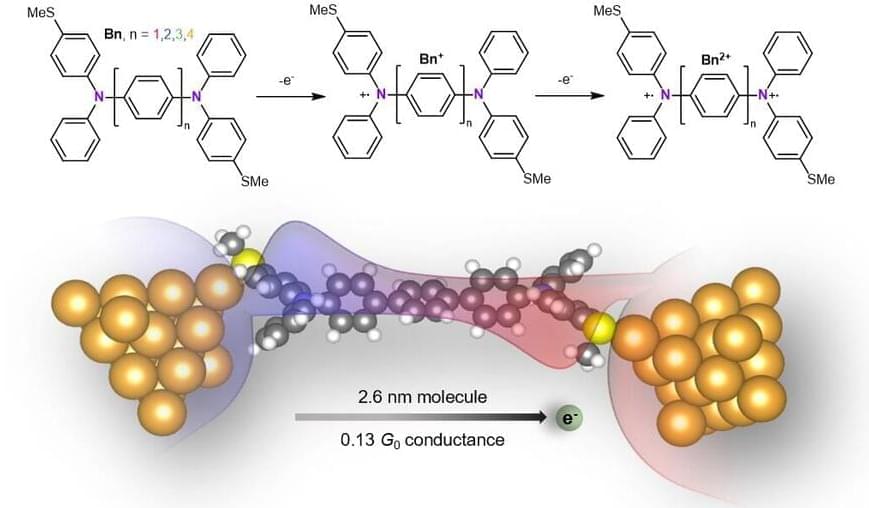
Researchers build longest highly-conductive molecular nanowire
As our devices get smaller and smaller, the use of molecules as the main components in electronic circuitry is becoming ever more critical. Over the past 10 years, researchers have been trying to use single molecules as conducting wires because of their small scale, distinct electronic characteristics, and high tunability. But in most molecular wires, as the length of the wire increases, the efficiency by which electrons are transmitted across the wire decreases exponentially. This limitation has made it especially challenging to build a long molecular wire—one that is much longer than a nanometer—that actually conducts electricity well.
Columbia researchers announced today that they have built a nanowire that is 2.6 nanometers long, shows an unusual increase in conductance as the wire length increases, and has quasi-metallic properties. Its excellent conductivity holds great promise for the field of molecular electronics, enabling electronic devices to become even tinier. The study is published today in Nature Chemistry.
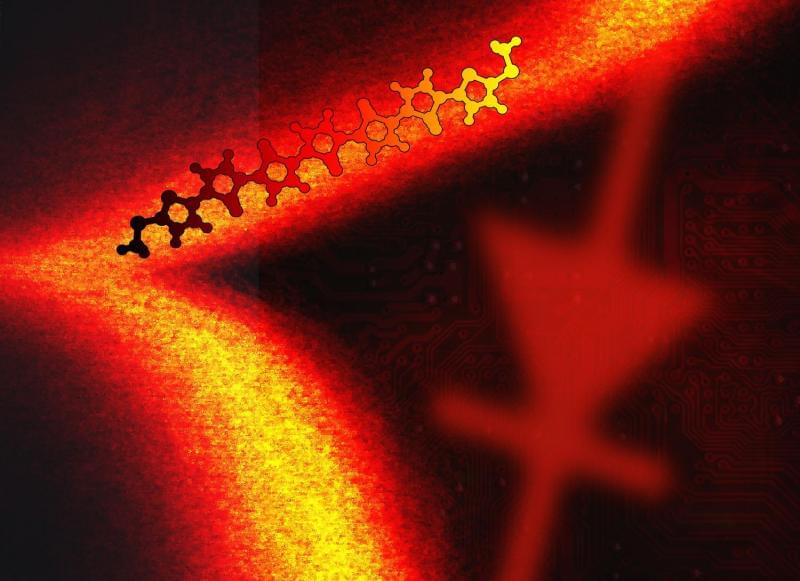
Researchers first to create a single-molecule diode
Under the direction of Latha Venkataraman, associate professor of applied physics at Columbia Engineering, researchers have designed a new technique to create a single-molecule diode, and, in doing so, they have developed molecular diodes that perform 50 times better than all prior designs. Venkataraman’s group is the first to develop a single-molecule diode that may have real-world technological applications for nanoscale devices. Their paper, “Single-Molecule Diodes with High On-Off Ratios through Environmental Control,” is published May 25 in Nature Nanotechnology.
“Our new approach created a single-molecule diode that has a high (250) rectification and a high “on” current (~ 0.1 micro Amps),” says Venkataraman. “Constructing a device where the active elements are only a single molecule has long been a tantalizing dream in nanoscience. This goal, which has been the ‘holy grail’ of molecular electronics ever since its inception with Aviram and Ratner’s 1974 seminal paper, represents the ultimate in functional miniaturization that can be achieved for an electronic device.”
With electronic devices becoming smaller every day, the field of molecular electronics has become ever more critical in solving the problem of further miniaturization, and single molecules represent the limit of miniaturization. The idea of creating a single-molecule diode was suggested by Arieh Aviram and Mark Ratner who theorized in 1974 that a molecule could act as a rectifier, a one-way conductor of electric current. Researchers have since been exploring the charge-transport properties of molecules. They have shown that single-molecules attached to metal electrodes (single-molecule junctions) can be made to act as a variety of circuit elements, including resistors, switches, transistors, and, indeed, diodes. They have learned that it is possible to see quantum mechanical effects, such as interference, manifest in the conductance properties of molecular junctions.
Molecular machines of the future | Hendrik Dietz | TEDxTUMSalon
Evolution has developed very efficient molecular machines, for example for producing energy through rotation. Hendrik Dietz would like to harness these concepts to build his own molecular motors. His group has successfully demonstrated that they can encode and synthesize complex shapes using DNA origami, and have recently discovered how to reduce the cost for mass use and production. With his research, Dietz gets closer to his goal of revolutionizing nanotechnology with the capabilities of molecular motors, just like industry was revolutionized by electric and diesel motors.
. Can you remember playing with legos? Now imagine doing that with molecules. Prof. Hendrik Dietz, professor for experimental biophysics at TUM, runs a lab which does just that. Inspired by the rich functionalities of natural macromolecular assemblies such as enzymes, molecular motors, and viruses, the Dietz lab investigates how to build increasingly complex molecular structures. The goal is to build molecular devices and machines that can execute user-defined tasks. DNA origami in particular enables building nanodevices that can already be employed for making new discoveries in biomolecular physics and protein science. This talk was given at a TEDx event using the TED conference format but independently organized by a local community.
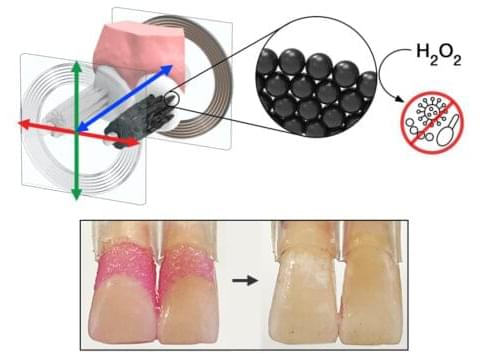
Scientists Create Programmable Nanoparticle Toothbrush
The basic design of the toothbrush hasn’t changed in a thousand years — sure, there are motors, different materials, and funky shapes, but they’re all still sticks with bristles attached. A team from the University of Pennsylvania believes it’s time to shake things up. In a new study, the researchers have shown that shapeshifting nanoparticles can successfully clean teeth, replacing all the manual labor with a nano-scale robotic dance. Not only can these particles be transformed into tooth-cleaning shapes, but their action can have antimicrobial effects that destroy plaque-causing bacteria.
This project came together quite by accident. A group from the Penn School of Dental Medicine under professor Hyun (Michel) Koo was interested in leveraging the catalytic activity of nanoparticles to release free radicals that could kill microbes on the teeth. Meanwhile, senior engineering researcher Edward Steagar was spearheading work at the Penn School of Engineering and Applied Sciences on assembling nanoparticles into robots. Bringing these projects together gave us the sci-fi gray goo toothbrush.
The combined team used magnetic fields to manipulate iron oxide nanoparticles, testing them first on a slab of tooth-like material. Next, the team moved to 3D-printed copies of teeth. Finally, they tested the nanoparticle brushes on real teeth that were mounted in a realistic way to simulate a human mouth. The tests show these nanoparticles can form brush-like shapes capable of scrubbing off the biofilms that lead to tooth decay. They can also flow between teeth like floss. All the while, the nanoparticles promote the production of free radicals that further eliminate bacteria.
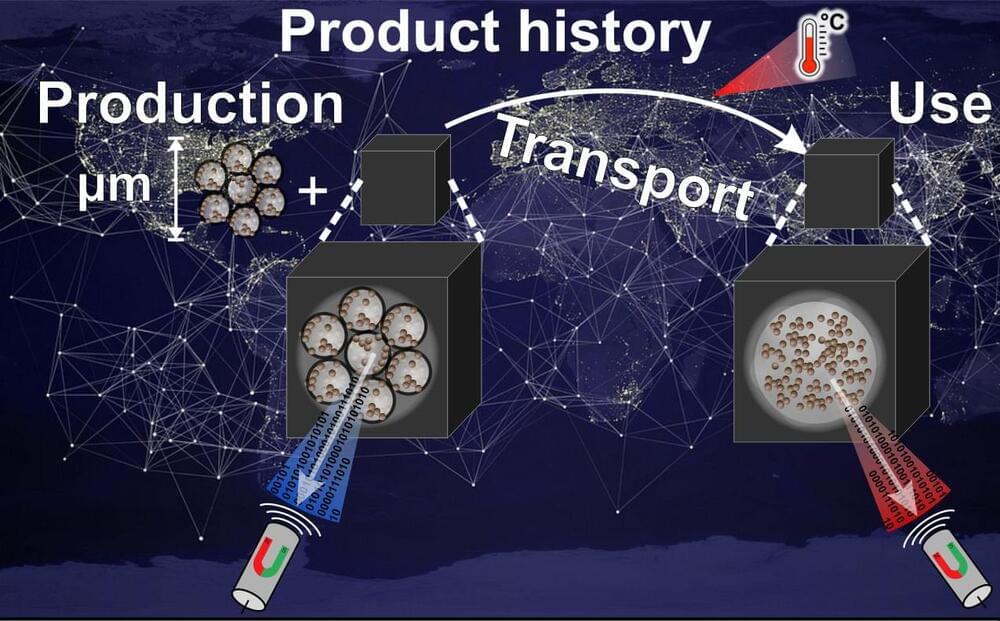
Nano-rust: Smart additive for autonomous temperature control
The right temperature ensures the success of technical processes, the quality of food and medicines, or affects the lifetime of electronic components and batteries. Temperature indicators enable to detect (un)desired temperature exposures and irreversibly record them by changing their signal for a readout at any later time.
Of particular interest are small-sized temperature indicators that can be easily integrated into any arbitrary object and subsequently monitor the objects’ temperature history autonomously, i.e. without power supply. Accordingly, the indicators’ signal readout permits to verify successful bonding processes, to uncover temperature peaks in global supply chains, or to localize hot spots in electronic devices.
Prof. Dr. Karl Mandel (Professorship for Inorganic Chemistry) and his research group have succeeded in developing a new type of temperature indicator in the form of a micrometer-sized particle, which differs from previously established, mostly optical indicators mainly due to its innovative magnetic readout method. The results of the research work have now been published in the journal Advanced Materials (“Recording Temperature with Magnetic Supraparticles”).
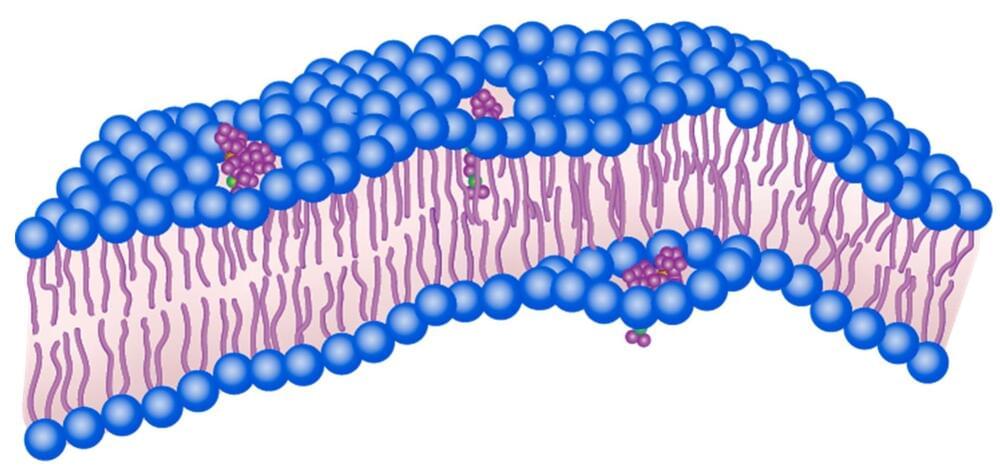
Molecular Machines: Bacteria-Killing Drills Get an Upgrade
Molecular machines that kill infectious bacteria have been taught to see their mission in a new light.
New nanoscale drills have been developed that are effective at killing bacteria. These novel molecular machines are activated by visible light and can punch holes through the cell membranes of bacteria in just two minutes. As bacteria have no natural defenses against this mechanism, it could be a useful strategy to treat antibiotic-resistant bacteria.
The latest iteration of nanoscale drills developed at Rice University are activated by visible light rather than ultraviolet (UV), as in earlier versions. These have also proven effective at killing bacteria through tests on real infections.

Russian Scientists Synthesize a New Ultra-Hard Material
Russian scientists have synthesized a new ultra-hard material containing scandium and carbon. It consists of polymerized fullerene molecules with scandium and carbon atoms inside. The work paves the way for future studies of fullerene-based ultra-hard materials, making them a potential candidate for use in photovoltaic and optical devices, elements of nanoelectronics and optoelectronics, biomedical engineering as high-performance contrast agents, etc. The research study was published in the journal Carbon.
The discovery of new, all-carbon molecules known as fullerenes almost forty years ago was a revolutionary breakthrough that paved the way for fullerene nanotechnology. Fullerenes have a spherical shape made of pentagons and hexagons that resembles a soccer ball, and a cavity within the carbon frame of fullerene molecules can accommodate a variety of atoms.

Physicists Record Temporal Coherence of a Graphene Qubit
Recently, researchers have been incorporating graphene-based materials into superconducting quantum computing devices, which promise faster, more efficient computing, among other perks. Until now, however, there’s been no recorded coherence for these advanced qubits, so there’s no knowing if they’re feasible for practical quantum computing.
In a paper published today in Nature Nanotechnology, the researchers demonstrate, for the first time, a coherent qubit made from graphene and exotic materials. These materials enable the qubit to change states through voltage, much like transistors in today’s traditional computer chips — and unlike most other types of superconducting qubits. Moreover, the researchers put a number to that coherence, clocking it at 55 nanoseconds, before the qubit returns to its ground state.
The work combined expertise from co-authors William D. Oliver, a physics professor of the practice and Lincoln Laboratory Fellow whose work focuses on quantum computing systems, and Pablo Jarillo-Herrero, the Cecil and Ida Green Professor of Physics at MIT who researches innovations in graphene.
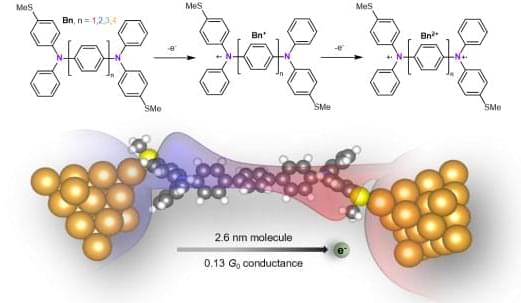
Researchers build longest, highly conductive molecular nanowire
As our devices get smaller and smaller, the use of molecules as the main components in electronic circuitry is becoming ever more critical. Over the past 10 years, researchers have been trying to use single molecules as conducting wires because of their small scale, distinct electronic characteristics, and high tunability. But in most molecular wires, as the length of the wire increases, the efficiency by which electrons are transmitted across the wire decreases exponentially. This limitation has made it especially challenging to build a long molecular wire—one that is much longer than a nanometer—that actually conducts electricity well.
Columbia researchers announced that they have built a nanowire that is 2.6 nanometers long, shows an unusual increase in conductance as the wire length increases, and has quasi-metallic properties. Its excellent conductivity holds great promise for the field of molecular electronics, enabling electronic devices to become even tinier.
The study is published in Nature Chemistry (“Highly conducting single-molecule topological insulators based on mono-and di-radical cations”).